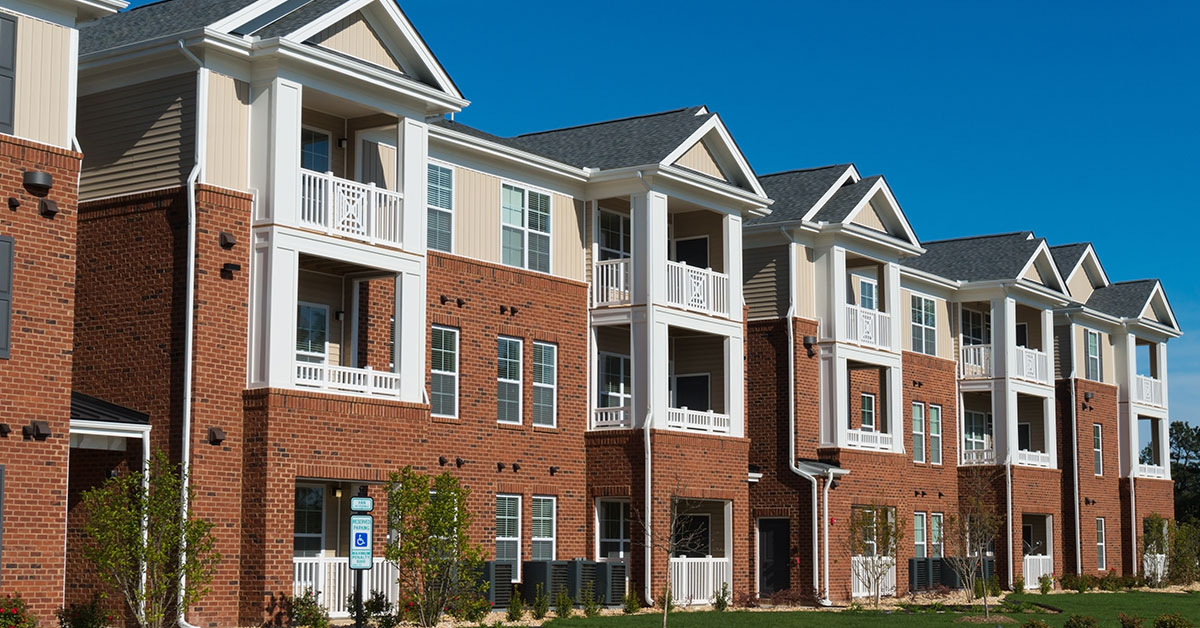Multifamily buildings that are rental properties often have individualized risk and insurance requirements. When working with loans on these transactions, you should know how the insurance industry covers and prices them. That way, you can speed up the process of obtaining the insurance binder. Further, you can answer any questions your borrowers may have.
How it’s defined
To the insurance industry, anything larger than a single-family home is generally considered multifamily. In other words, if it’s a dwelling that can house more than one family with multiple bathrooms, kitchens and bedrooms and some kind of separating wall, it’s multifamily to the insurer.
Duplex and triplex structures and sometimes even four-plex structures generally are insured with personal-lines insurance. Commercial-lines insurance covers four-plexes and larger multifamily dwellings such as apartments, townhomes and condominiums.
Do you close multifamily loans?
Find the perfect lender fast with the #1 lender search
Building-safety issues
Multifamily-insurance companies have many underwriting concerns that you must meet before they insure a property. Ultimately, they want to ensure that the property is up to code and safe to inhabit. Typically, insurers will want to know about:
- The age and type of wiring;
- Plumbing;
- Heating (whether it has central heating, window units or floor vents);
- Type of construction; and
- Firewalls.
Often, these buildings are more than 40 years old. This raises additional concerns about asbestos and lead-based paint. The insurer will also want to know about the structure’s condition — whether the dwelling was originally built for multifamily or whether it was converted from single-family.
Apartment buildings also present specific liability exposures. Because more than one family lives in close proximity in these structures, smoke detectors, sprinklers, fire extinguishers and firewalls are especially important. Insurance companies may have coverage conditions requiring that the dwellings have a specific number of smoke detectors and fire hydrants. They also may call for certain sizes and types of fire hydrants to be in the buildings.
Further, they may go so far as to state that the property-owners must check and maintain these fire-safety devices on a regular basis, or the insurers will void the coverage. This can add additional expenses for which your clients may not be prepared. This affects the financial bottom line.
Insurance companies also want to ensure that if one unit were to catch fire, it is possible to extinguish the fire. They want to know that there are mechanisms in place so that other tenants can be warned, and that the other units have maximum protection against damage. Additional liability concerns include public-meeting areas such as playgrounds, clubhouses and building entrances.
In fact, structures with a single entrance create more liability exposure than those with separate entrances. In some cases, multifamily buildings with single entrances and public areas can create a larger than acceptable liability exposure for the insurance company. This can result in your borrowers not getting coverage.
Underwriting
Multifamily properties have significant underwriting requirements. This means it takes longer for the agent to conduct the quoting process and to get the binder together. Thus, mortgage brokers working on a multifamily deal should not call their property-insurance agent right before closing to request an insurance binder for the property.
Most important, not all agents can or want to insure multifamily buildings in the first place. So when your clients seek to purchase a multifamily dwelling, find out upfront if the insurance agents you do business with will even consider insuring them.
If they do, then you should give at least three days notice to your insurance agents to get all the information necessary, get a quote and give you an insurance binder. To help speed up the process, send a copy of the appraisal and the inspection report to the insurance agent to review. Also provide the name and phone number of the seller’s agent in case there are more questions on the property that only the current owner can answer.
Coverage
Lenders will generally require that multifamily properties be covered for the loan amount and that they have replacement-cost coverage, loss-of-rent coverage and in some cases, liability coverage. When it comes to the loss of rent, the coverage must be added separately. This means that the insurance company will want your clients to explain how much rent will be charged for each unit and how many months in coverage they want. Lenders will generally want at least six months in rent-loss coverage.
For example, a four-plex for which your clients intend to charge $1,200 per month per unit will need $4,800 per month total coverage for a six-month period. Because multifamily buildings can take longer to rebuild, however, your insurance agent may suggest that the borrowers obtain 12 months in rent-loss coverage instead.
Liability coverage under a commercial policy can be either set up as a package or as a separate policy. Property-owners generally will start with $1 million in liability coverage and look at more depending on the number of families in the building and the number of multifamily buildings they own or are purchasing.
• • •
Again, multifamily properties that are rental properties present certain financial exposure to insurance companies. As such, it is beneficial for you to explain to your borrowers how insurance companies will assess these properties. Further, you should give the insurers ample time to review the transaction when you request the binder for closing.
Author
-
Marc A. Cisneros Jr. is CEO and co-owner of CS Innovative Insurance Solutions, an independent agency in San Antonio. He specializes in insurance programs catering to mortgage brokers, including errors-and-omissions coverage; commercial insurance; surety bonds; medical insurance; and home, rental and commercial insurance for clients.

